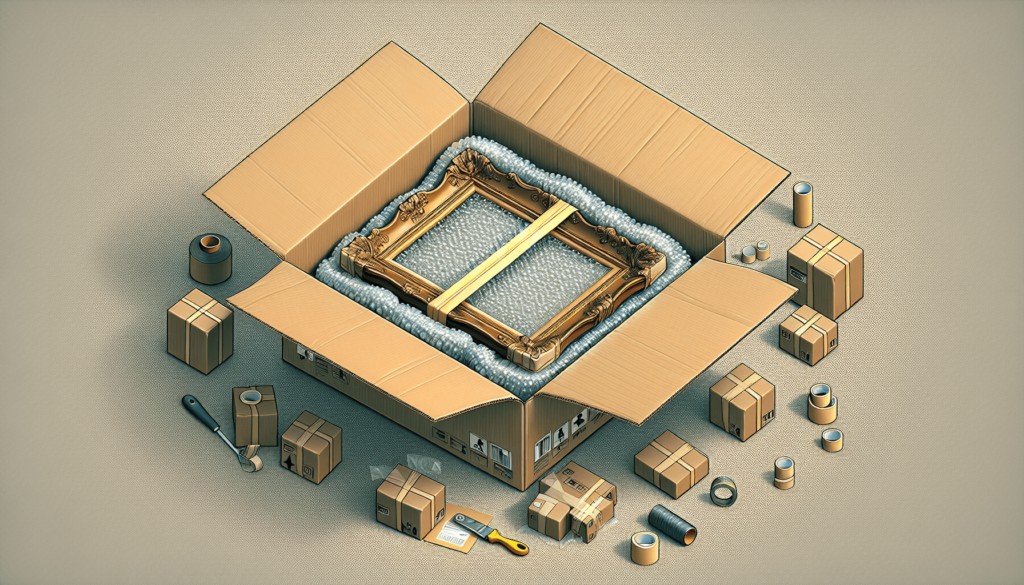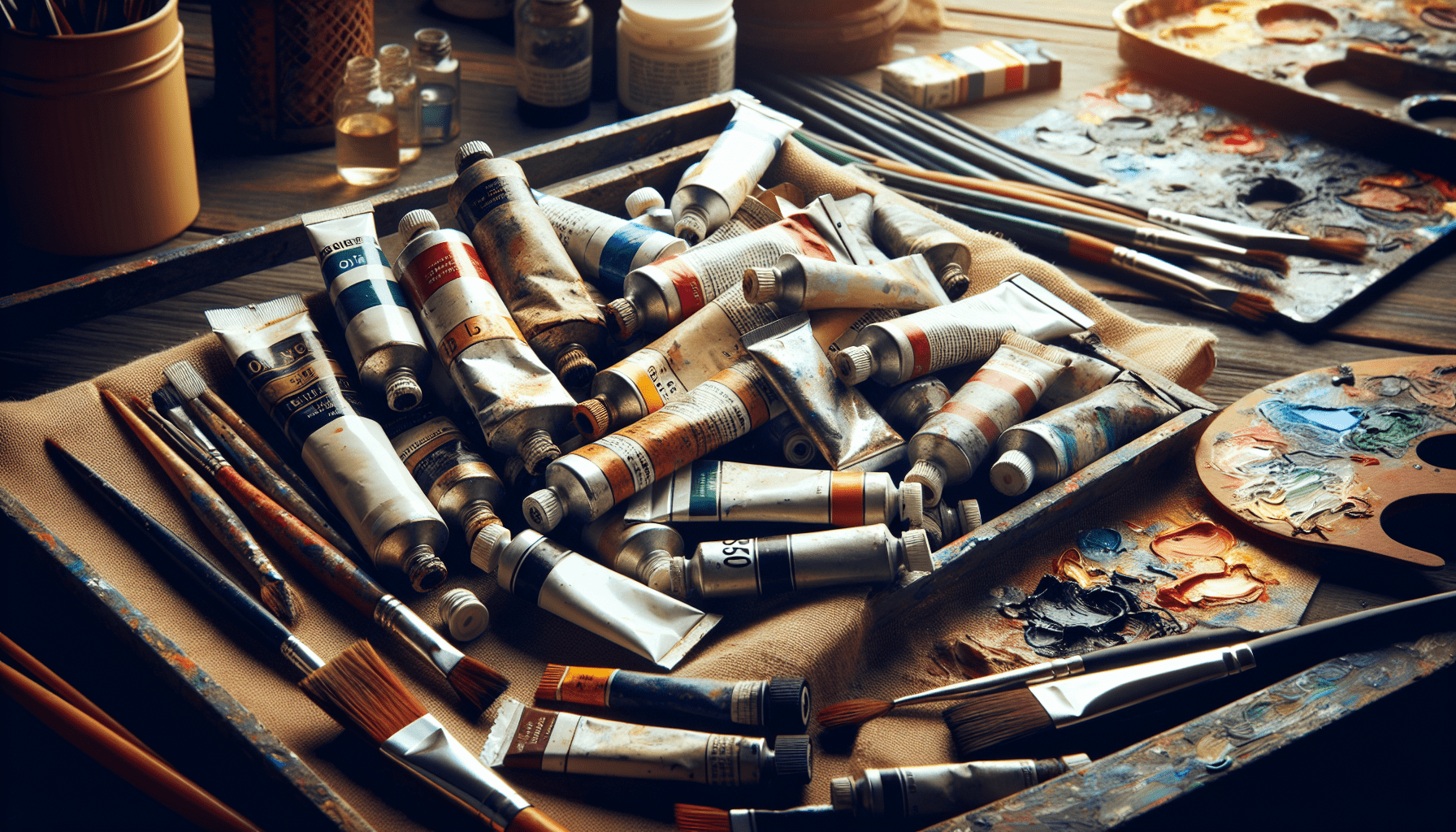Navigating the nuances of shipping an oil painting can be challenging, particularly if you are doing it for the first time. From selecting the right packaging material to ensuring the correct handling procedure, every step requires meticulous attention. “How To Ship An Oil Painting” provides you comprehensive details and practical tips that will help you ship an oil painting safely and efficiently. It’s designed to offer solid guidance that ensures your precious artworks reach their destination in pristine condition, regardless of the distance or destination.
Choosing the Right Packaging Materials
The first step in safely shipping an oil painting is choosing the right packaging materials. It goes without saying that securing your art piece properly will drastically reduce the risk of damage during transit.
Selecting a sturdy box
The choice of box is important as it forms the first layer of protection for your painting. It’s recommended to select a sturdy, corrugated cardboard box that is slightly larger than your painting. This allows room for padding materials and reduces movement during transport.
Using acid-free and archival materials
When choosing packaging materials, you should consider acid-free and archival materials. This is because regular, acid-containing materials may harm the painting over time, causing discoloration and deterioration. Archival materials are specially designed to protect and preserve artworks, ensuring they remain in their original condition.
Providing extra padding
Extra padding in the box is a must when shipping oil paintings. Padding materials such as bubble wrap or packing peanuts can cushion the painting and absorb any shock or vibrations during transit, reducing the risk of damage.
Securing the painting with packaging tape
Finally, you should secure your painting and all packaging materials tightly using packaging tape. This prevents any movement within the box during transportation, offering another layer of protection.
Preparing the Painting
Before packaging, preparing your painting properly can ensure its safe arrival at its destination.
Removing the painting from the frame
If the painting is framed, removing it carefully can prevent any potential damage during transit. This action reduces the weight and size of the package, making it easier and safer to ship.
Protecting the painting with glassine paper
For added protection, cover the surface of the painting with a sheet of glassine paper. This acid-free, water-resistant paper protects the oil painting from dust, moisture and smudging, preserving its condition during transit.
Insulating the corners
Take extra precaution by insulating all four corners of the painting. This can be achieved through the use of corner protectors, often made from cardboard or foam. These protect the corners from any impact, minimizing the risk of damage.
Adding a layer of bubble wrap
Once the painting is properly secured with glassine paper and corner protectors, add a layer of bubble wrap around the entire painting. This provides another layer of cushioning, protecting the painting from any shocks or vibrations during shipping.

Creating a Custom Crate
In some cases, especially when shipping larger or high-value oil paintings, creating a custom crate may be necessary.
Measuring the dimensions of the painting
Measure the dimensions of your painting including height, width and depth. These measurements will dictate the size of the crate you need to build.
Cutting plywood sheets for the crate
Once you have your painting’s measurements, begin cutting plywood sheets for the crate. The thickness of the plywood should be sufficient to protect the painting from major impacts.
Building the crate with screws
Using the cut plywood, construct the crate. Use screws to secure all sides of the crate together. The crate should be sturdy enough to withstand movements during transit.
Ensuring the crate is sturdy and well-constructed
Lastly, verify that the crate or box is sturdy and well-constructed. It should provide a secure, solid casing for the painting.
Applying Fragile Stickers and Labels
Clear and visible labels or stickers are key to ensuring your painting is handled gently and appropriately during shipping.
Using fragile stickers and ‘handle with care’ labels
Affix ‘Fragile’ stickers or ‘Handle with Care’ labels conspicuously on the crate or box. This alerts shipping carriers to the delicacy of the item and encourages careful handling.
Including ‘this side up’ and ‘do not stack’ instructions
In addition to fragile labels, consider using ‘This Side Up’ and ‘Do Not Stack’ instructions. These ensure the painting remains in the correct orientation during shipping and discourages loading other items on top of the box.
Writing your contact information on the package
Write your contact information, including address and phone number, on the package. This information will greatly help the shipping carrier in case of any issues or if they need to contact you.

Insuring the Painting
Despite all the precautions taken to ensure safe shipping, accidents can still happen. Therefore, insuring your painting is your best bet against financial loss.
Researching and selecting appropriate insurance
Take time to research and select an insurance policy appropriate for your painting. The policy should cover the total value of the painting in case of damage or loss during transit.
Consulting with a professional appraiser
A professional appraiser can help determine the fair market value of your painting. This evaluation can be invaluable when selecting an insurance amount for your painting.
Documenting the painting’s condition with photographs
Before shipping, document your painting’s condition with photographs. This not only helps during claims but also serves as a reference to monitor any potential damage during transit.
Choosing a Reliable Shipping Carrier
Choosing an experienced and reliable shipping carrier is crucial to ensure the safe delivery of your art piece.
Researching reputable shipping companies
Spend time researching different shipping companies to find the one that best suits your needs. You should consider their reputation, experience and track record in shipping delicate items such as oil paintings.
Taking into account their experience in handling delicate items
Shipping companies with experience in handling delicate items are often better equipped to handle your painting safely. They are aware of the unique requirements of such items and have trained personnel to manage them.
Checking customer reviews and ratings
Customer reviews and ratings provide insights into a shipping company’s service quality. Look for companies with positive reviews, particularly from customers who have shipped similar items.
Considering shipping options, costs, and delivery timelines
Consider the shipping options available, as well as the associated costs and delivery timelines. You should choose a service level that aligns with your budget and timeline, without compromising the security of your artwork.
Scheduling the Pickup or Drop-off
Once you have chosen a shipping carrier, the next step is to schedule the shipment of your painting.
Contacting the shipping carrier to coordinate the shipment
Reach out to your chosen shipping carrier to coordinate the shipment. You may need to provide them with details about the painting’s size, value, and destination.
Arranging a convenient pickup or drop-off location
Arrange for a convenient pickup or drop-off location with the shipping carrier. Ensure the location is safe and easily accessible.
Ensuring someone is available to receive the package
Make sure there is someone available to receive the package at the destination. The recipient should be informed about the delivery and instructed on how to handle and unpack the painting properly.
Packing the Crate or Box
After preparing your painting and your chosen crate or box, you can then move to pack the painting securely.
Placing the painting securely inside the crate
Place your painting inside the crate in a way that minimizes movement during transit. This could be horizontal, vertical, or using custom fixtures, depending on the design of your crate.
Adding additional padding around the artwork
Add additional padding around the artwork to prevent movement. This can be packing peanuts, foam sheets or additional bubble wrap. Make sure that the painting is snugly fit and has minimal room to move.
Sealing the crate with screws
Once the painting is securely placed and padded, seal the crate using screws. This should be done in a manner that ensures the painting cannot be removed without unscrewing the crate.
Securing the box with heavy-duty packaging tape
Finally, secure the crate or box with heavy-duty packaging tape. Make sure every edge and corner is securely taped down, paying extra attention to the pressure points such as the bottom of the box or corners of the crate.
Tracking and Monitoring the Shipment
After sending off your painting, keep track of its journey to ensure it arrives at its destination safely.
Receiving a tracking number from the shipping carrier
Once your painting is shipped, the shipping carrier should provide you with a tracking number. This allows you to monitor the progress of the shipment online.
Regularly checking the shipment’s progress online
Using the tracking number, regularly check the shipment’s progress online. This allows you to keep an eye on your painting’s journey and anticipate its arrival.
Contacting the carrier in case of any delays or issues
In the case of any delays or issues, contact the carrier immediately. Share your concerns and seek clarification or information as necessary.
Arranging for Professional Installation
Once the painting has arrived at its destination, consider arranging for a professional to install it.
Hiring a professional art handler or installer
To ensure your painting is displayed correctly and safely, consider hiring a professional art handler or installer. They have the necessary skills and experience to handle and install your art carefully.
Providing them with detailed instructions for placement
Provide the installer with detailed instructions on the placement of your painting. This could include the height at which the painting should be suspended, the lighting conditions, and any specific security measures.
Ensuring the painting is safely hung and displayed
After installation, make sure that the painting is securely hung and displayed correctly. At this stage, you can breathe a sigh of relief. Your oil painting has safely made it to its new home and is ready for viewers to enjoy.



